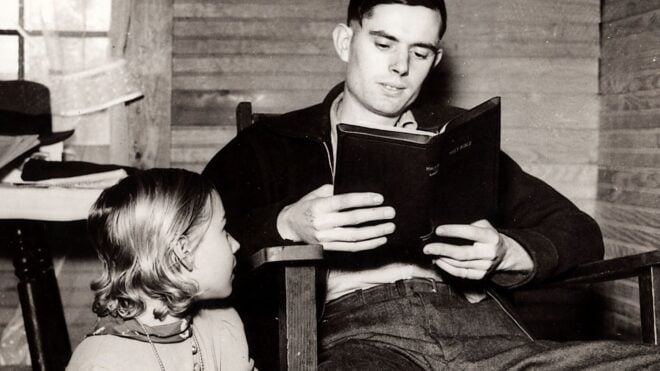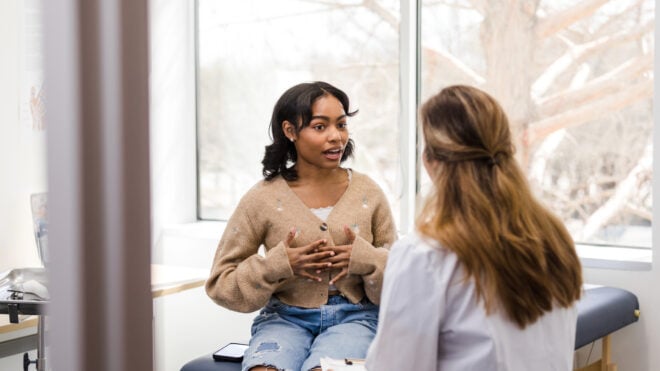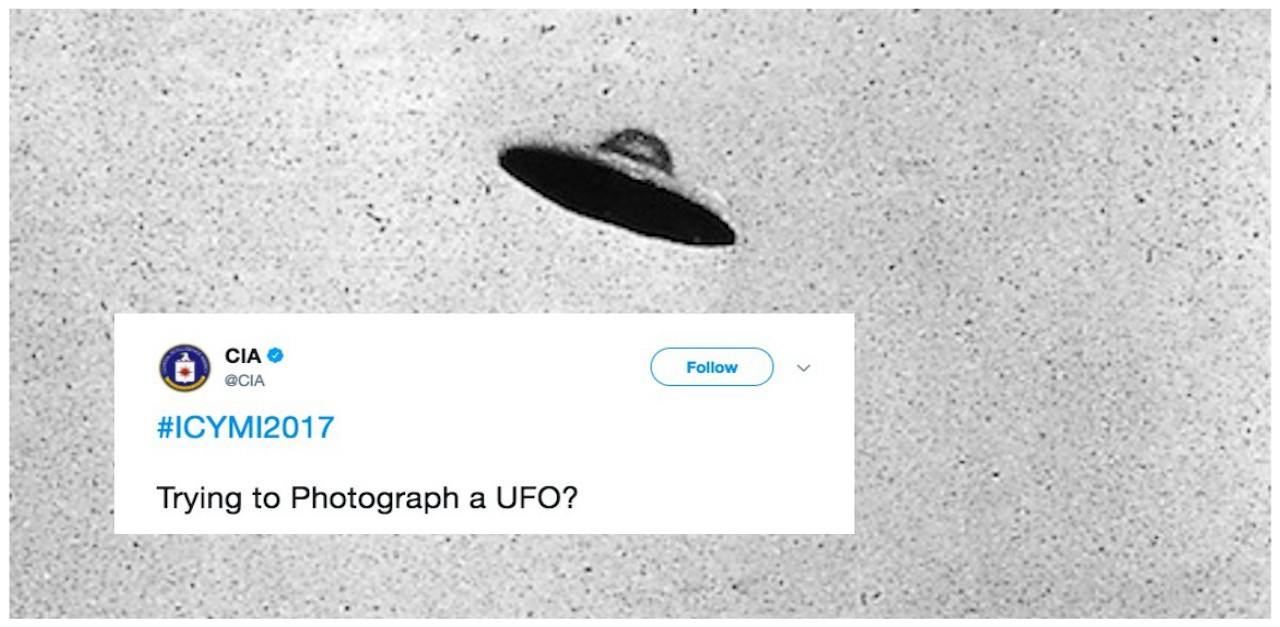
Do you believe in life on other planets?
The idea that we are not alone in the universe has captured human attention since we figured out that the earth wasn't flat.
Our interest in aliens has only increased since people began spotting unidentified flying objects, or UFOs, whizzing through the sky.
Now, people snap photos and film footage of supposed UFOs all the time. Some of them, like this video of an object flying next to an airplane, are even pretty convincing.
The government and its various agencies have denied the legitimacy of UFOs for the most part.
However, to celebrate World UFO Day back in July 2017, the CIA found and released some old documents that actually instruct civilians about how to get the best quality photos of a flying saucer.
Thumbnail Photo: Twitter / CIA

According to the article, the CIA found the documents in their Freedom of Information Act archives.
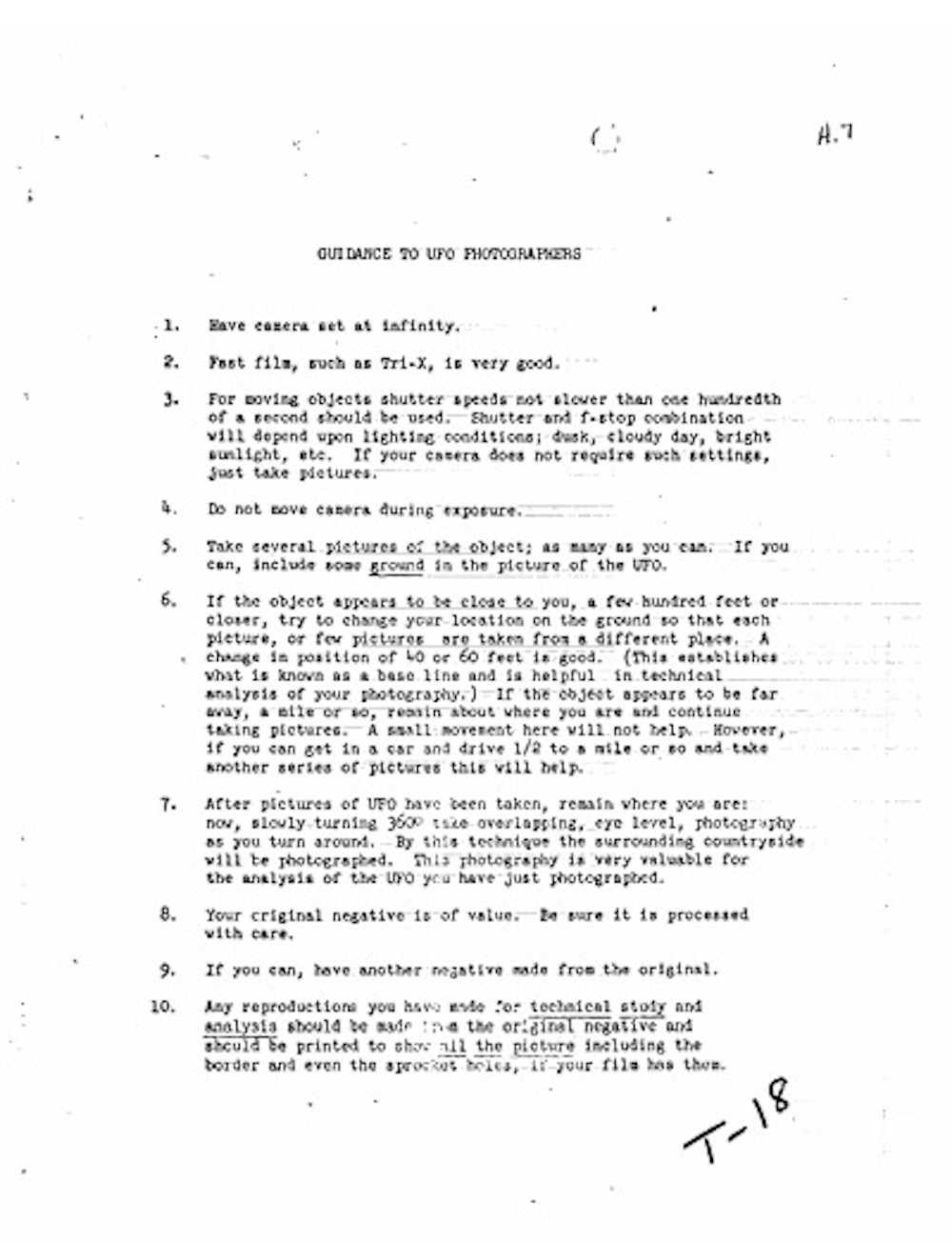
In the first document, titled "Guidance for UFO Photographers," the agency outlines some technical instructions about how to take the best photo possible when it comes to UFOs.
The list is as follows:
- Have camera set at infinity.
- Fast films, such as Tri-X, is very good.
- For moving objects, shutter speeds not slower than one hundredth of a second should be used. Shutter and f-stop combination will depend upon lighting conditions; dusk, cloudy day, bright sunlight, etc. If your camera does not require such settings, just take the pictures.
4. Do not move camera during exposure.
5. Take several pictures of the object; as many as you can. If you can, include some ground in the picture of the UFO.
6. If the objects appears to be close you you, a few hundred feet or closer, try to change your location on the ground so that each picture, or few pictures are taken from a different place. A change in position of 40 or 50 feet is good. (This establishes what is known as a base line and in helpful in technical photography analysis of your photography). If the object appears to be far away, a mile or so, remain about where you are and continue taking pictures. A small movement here will not help. However, if you can get in a car and drive 1/2 to a mile or so and take another series of pictures this will help.
7. After pictures of UFO have been taken, remain where you are: now, slowly turning 360 take overlapping, eye level, photography as you turn around. By this technique the surrounding countryside will be photographed. This photography is very valuable for the analysis of the UFO you have just photographed.
8. Your critical negative is of value. Be sure it is processed with care.
9. If you can, have another negative made from the original.
10. Any reproductions you have made for technical study analysis should be made from the original negative and should be printed to show all the picture including the border and even the sprocket holes, if your film has them.
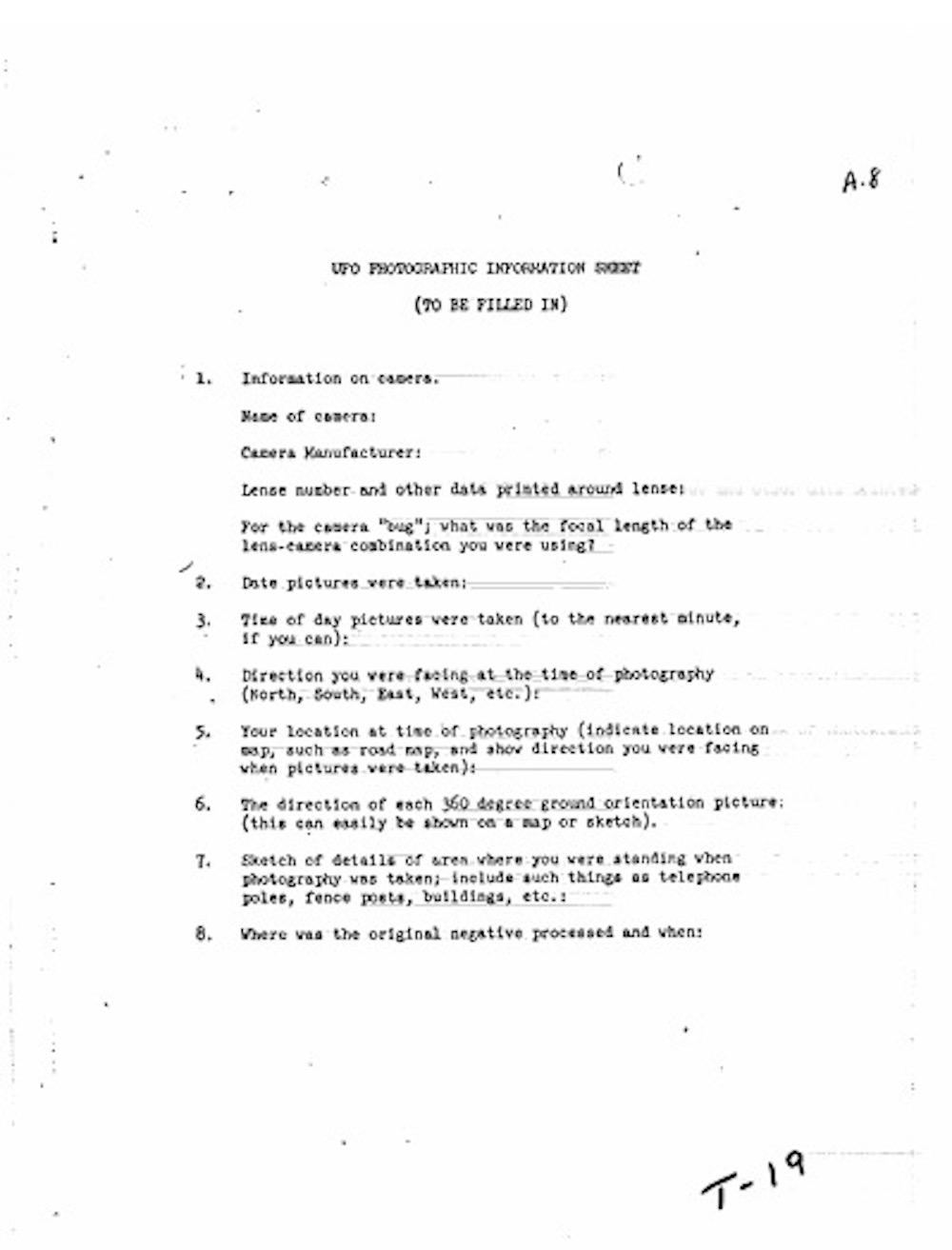
The CIA also released this form to fill out when submitting photos to them for analysis. Details they ask for include:
1. Information on camera.
Name of camera:
Camera Manufacturer:
Lense number and other data printed around lense:
For the camera “bug”; what was the focal length of lens-camera combination you were using?
2. Date pictures were taken:
3. Time of day pictures were taken (to meet the nearest minute, if you can):
4. Direction you were facing at the time of photography (North, South, East, West, etc.):
5. Your location at time of photography (indicate location on map, such as road map, and show direction you were facing when pictures were taken):
6. The direction of each 360 degree ground orientation picture: (this can easily be shown on a map or sketch).
7. Sketch of details of area where you were standing when photography was taken; include such things as telephone poles, fence posts, buildings, etc.:
8. Where was the original negative processed and when:
Be sure to SHARE this with anyone who believes in life on other planets!


